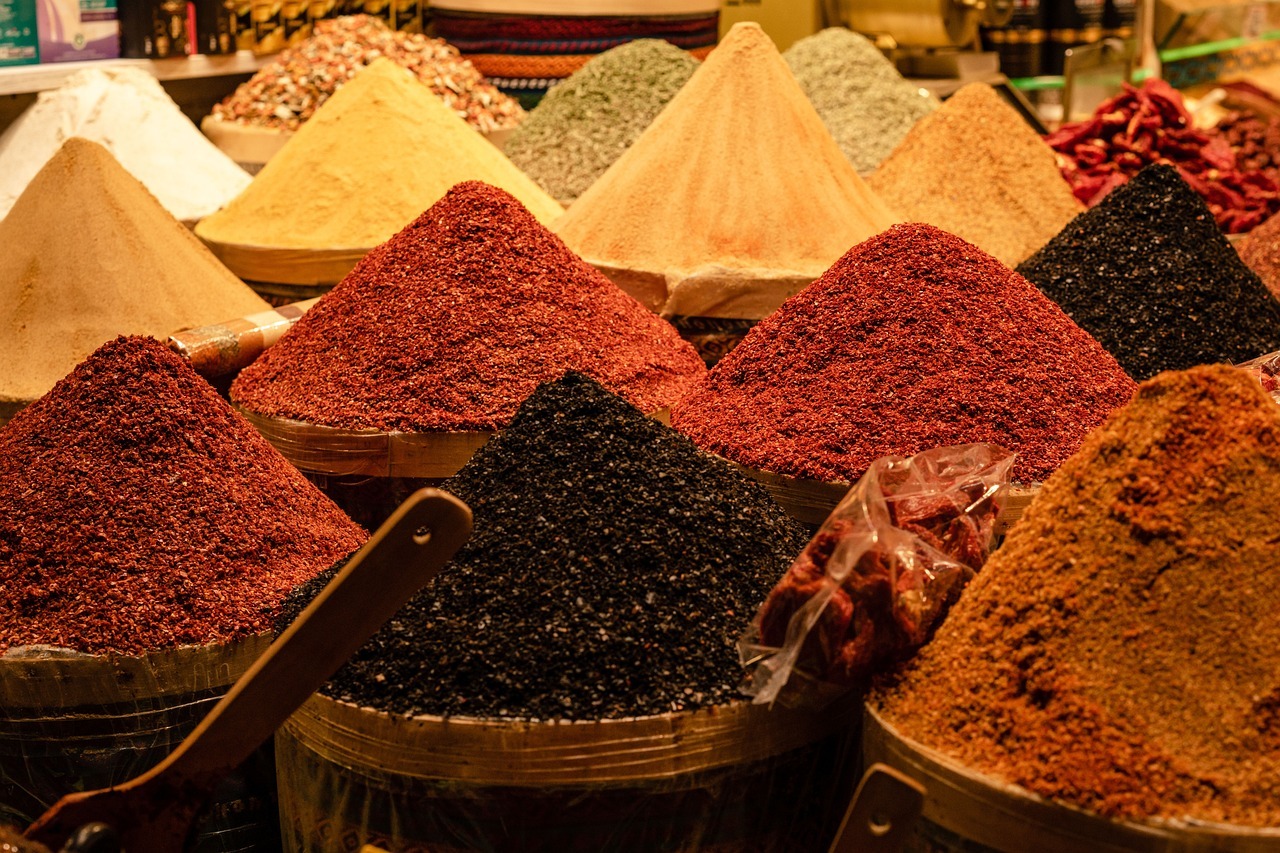Overview
If you’ve watched the ingredient labels of snacks, soups, sauces, seasonings, or instant meal kits over the last few years, one pattern jumps out: dehydrated vegetables and vegetable powders are everywhere. From onion and garlic powders to tomato flakes, beet powder, spinach granules, and mixed veg blends, these shelf-stable workhorses have moved from niche to mainstream—and they’re one of the hottest categories in global food trade.
Below is a clear, practical look at why demand is surging, what’s changing on the supply side, and how exporters can ride the wave without tripping over quality or compliance.
1) Demand has gone global—and it’s diversified
B2B food is the backbone of this boom. Dehydrated veg and powders are essential inputs for:
- Instant noodles, cup soups, and ramen kits
- Snack seasonings (chips, extruded snacks, nuts)
- Ready-to-cook gravies, RTC meal kits, and HORECA blends
- Frozen and chilled meals (dry inclusions that rehydrate during cooking)
- Plant-based meat flavor systems (onion/garlic/umami bases)
- Bakery and health foods (beet/carrot/spinach powders for colour and nutrition)
- Pet food and nutraceuticals
Manufacturers love these ingredients because they bring consistent flavour, predictable specs, long shelf life, and ambient storage—all of which simplify operations across borders.
Consumer pull matters too. “Clean label” and “better-for-your convenience” trends favour real-ingredient seasonings over purely artificial flavours. E-commerce and private label have also widened distribution: in market analyses, online channels are among the fastest-growing routes for this category. One forecast, for instance, expects online retail for dehydrated vegetables to expand at ~10%+ CAGR, while freeze-dried formats already command a notable share, reflecting premium, quality-first positioning.
2) The economics are compelling for exporters
Fresh vegetables are mostly water. Remove that water and everything about logistics gets easier: less weight, less volume, far fewer shipping constraints, and no cold chain. The result is dramatic savings in freight, storage, and packaging. Even older but authoritative technical references point out that dehydration cuts both weight and volume, lowering packaging, storage, and transportation costs—core advantages that compound over long export lanes.
Practical takeaway: a truck or container that would normally max out on weight with fresh produce can often max out on space with dehydrated product—i.e., you ship far more servings per load. Industry guidance aimed at post-harvest managers underscores the same point: the lightweight nature of dehydrated product radically improves transport efficiency versus “water-heavy” fresh produce.
For buyers, this predictability translates into stable input costs, easier inventory planning, and smaller working-capital swings—all of which are prized by global food brands in an inflationary world.
3) Technology has matured—and keeps getting better
Dehydration isn’t one thing; it’s a toolkit. Spray drying, air drying, drum drying, vacuum drying, microwave-assisted drying, and freeze-drying all exist along a curve balancing flavour, colour, texture, nutrient retention, microbial load, and cost. Two trends stand out:
- Freeze-drying’s premium edge: It retains shape, colour, and delicate volatiles exceptionally well—perfect for premium soups, snacks, and inclusions. Market data shows freeze-dried vegetables holding a significant share within dehydrated formats.
- Smarter pre-treatments and hybrid methods: Osmotic dehydration and other pre-treatments improve retention of vitamins, colour, and flavour, with recent reviews highlighting their effectiveness in preserving quality while extending shelf life.
These advances let exporters tune products to spec—particle size, moisture, water activity, volatile retention, and microbiological parameters—helping them win higher-value contracts.
4) Supply chains want shelf life and less waste
Retailers and foodservice operators hate waste. Shelf-stable ingredients mean less shrink, smoother forecasting, and fewer write-offs. Academic and institutional work keeps reiterating the point: extending shelf life reduces food waste and delivers measurable environmental benefits across the value chain.
Because dehydrated veg and powders are stable at ambient temperatures and rehydrate on demand, they unstick bottlenecks in long, multi-country supply chains. That reliability is priceless when ports slow down, shipping rates spike, or cold-chain capacity is tight.
5) The market numbers back the momentum
Estimates vary by methodology, but the direction is unmistakable:
- One analysis values the global dehydrated vegetable market at ~$88.2B in 2025, projecting it to ~$192.1B by 2035 (CAGR ~8.1%).
- Another puts 2024 market size at ~$78.8B, with growth to ~$114.5B by 2033 (CAGR ~4.2%).
- A separate report estimates ~$104.6B in 2024 rising to ~$159.3B by 2032 (CAGR ~5.4%).
- Zooming in on vegetable powders specifically, one forecast expects growth from ~$1.37B in 2023 to ~$3.3B by 2033 (CAGR ~9.2%).
Different baselines, same signal: steady, broad-based expansion—with premium formats and online distribution growing even faster.
6) Trade patterns tell the story (onion & garlic lead the way)
Onion and garlic are the “gateway” powders for many exporters and buyers. They have consistent pull across cuisines and categories, and they carry flavour efficiently in blends.
- Example: India’s dehydrated onion trade has been robust, with datasets showing tens of thousands of export shipments and wide buyer distribution across Brazil, Indonesia, Germany, and more.
- Onion powder specifically saw 1,700+ export shipments from India in the 12 months to Feb 2024, with the U.S., Canada, Mexico, the U.K., Germany, the Netherlands, France, Spain and other European/West Asian markets among top destinations.
For new exporters in garlic, onion, and mixed veg powders, these lanes offer proven demand and repeat volumes.
7) Why buyers prefer dehydrated & powders vs. fresh or frozen
Operational simplicity: No cold chain, easier storage, fast batching, and consistent spec.
Cost efficiency: Lower freight per serving and less packaging; reduced spoilage and write-offs.
Formulation control: Particle size and moisture can be dialled in; blends can be pre-standardized to target flavour notes.
Safety & compliance: Lower water activity and heat steps reduce microbial risk (still requires robust HACCP), and sterilization options are available for sensitive applications.
Sustainability alignment: Fewer refrigerated miles and less waste (especially in long routes) resonate with corporate sustainability goals and retailer scorecards.
8) What’s changed recently (and why it matters)
- Premiumization: From “commodity onion” to curated origin stories (e.g., specific varieties, pungency levels, organic) and freeze-dried inclusions that keep their bite in soups and ramen.
- E-commerce & private label: Private brands now launch global lines of mixes, rubs, and healthy meal kits that rely on stable, versatile dry inputs—driving more cross-border sourcing.
- Food-waste innovation: The idea of converting surplus produce into powders (via advanced drying) is no longer niche; it’s part of mainstream sustainability narratives and product pipelines
9) Challenges to watch (so you keep margins and buyers)
- Energy costs & yield losses: Drying is energy-intensive. Build this into pricing models and explore energy-efficient methods or heat-recovery systems.
- Volatile raw material supply: Weather and farm pricing still matter; forward contracts and diversified sourcing help.
- Quality drift in long runs: Volatile compounds (especially in onion/garlic) can fade or oxidize. Choose the right process (e.g., low-temp air dry, vacuum, freeze-dry) and oxygen/moisture barriers in packaging.
- Caking & flowability: Powders absorb moisture; use proper water activity targets, desiccants, and, if allowed, minimal anti-caking agents.
- Regulatory friction: MRLs (pesticide residues), ethylene oxide restrictions in certain markets, allergen labeling, and origin claims require discipline across the chain.
- Spec creep: Buyers may push for tighter micro specs (TPC, yeast/mold, pathogens) without paying more. Lock specs in contracts and price for the risk.
10) How exporters can win right now
A. Nail product–market fit (by buyer segment)
- Seasoning blenders & snack makers: Offer consistent granulation, tight moisture/aw, and reliable flavour strength. Provide volatile oil specs for onion/garlic.
- Soup/noodle manufacturers: Consider freeze-dried or carefully air-dried inclusions to preserve shape and colour; validate rehydration performance.
- Clean-label brands: Highlight single-ingredient claims, non-GMO, organic, and test results (pesticides, heavy metals, micro).
- HORECA & foodservice: Larger packs, robust cartons, and dust-reduced granules for kitchen handling.
B. Professionalize your documentation
- Full spec sheet with particle size distribution, moisture %, water activity, bulk density, micro limits, shelf life, storage, and recommended use.
- Certificates: HACCP, ISO 22000/FSSC 22000, BRCGS/IFS (as applicable), Halal/Kosher where relevant.
- Lot traceability and CoAs per shipment; include results for pesticide residues to meet EU/U.K. and other strict markets.
C. Package for distance
- High-barrier laminates (oxygen + moisture), nitrogen flushing if needed, desiccants, and outer cartons rated for export.
- Specify palettes, stacking limits, and handling instructions to avoid powder compaction and caking.
D. Price with precision
- Quote FOB + CIF options. Separate product price from logistics, packaging, quality assurance testing, and certifications so buyers see the value chain.
- For volatile harvests, use price validity windows and raw-material adjustment clauses.
E. Build repeatability
- Share pilot samples and plant trial quantities; support the buyer’s R&D with application notes (e.g., rehydration ratios, viscosity behaviour).
- Keep SKU hygiene: standardized codes for sizes (powder/ground/granules/flakes) and blends to reduce confusion and returns.
11) Country examples: onion & garlic as templates
If you produce onion and garlic powders (or related blends), you’re in good company. Trade trackers show broad buyer bases and steady order cycles for dehydrated onion from India (with major lanes into the Americas, Europe, and Southeast Asia). Pair that with onion powder’s thousand-plus shipment cadence in a single year and you see why many exporters start here and then expand into tomato, carrot, beet, spinach, capsicum, and mixed-veg lines.
12) The outlook: steady growth, premium pockets
Across reports, the exact numbers differ, but the trajectory is clearly upward—from tens of billions today to much higher by the early 2030s, with mid-single to high-single digit CAGR depending on method and scope. Premium segments (freeze-dried, organic, clean-label) and online/private label are poised to outpace the category average.
From a strategic standpoint, that means resilience: even if one channel slows, others (snacks, convenience meals, health foods, foodservice) keep pulling. Add the structural benefits—lighter freight, ambient storage, less waste—and you get a category that’s naturally tuned for cross-border trade.
Quick exporter checklist
- Specs: lock granulation, moisture/aw, micro limits, and flavour strength.
- Docs: HACCP + GFSI-benchmarked certification; CoA with pesticide panels for strict markets.
- Packaging: moisture/oxygen barrier, desiccants, sturdy cartons, clear palletization.
- Samples: provide stable pilot samples and application guidance (rehydration ratios, usage levels).
- Contracts: price validity windows, logistics breakdown, and clear Incoterms.
- Pipeline: start with onion/garlic; expand into tailored blends and premium freeze-dried inclusions as relationships mature.
Bottom line
Dehydrated vegetables and powders solve high-friction problems in global food supply chains while fitting the flavour, cost, safety, and sustainability needs of modern brands. With logistics efficiencies, shelf-life advantages, technology-driven quality, and broad application across categories, it’s no surprise this space is booming—and it still has headroom for exporters who can match quality with documentation, packaging, and service.
If you’re already working in onion/garlic, you’re on the fast lane. The next step is deeper specialization: spec-driven products for specific buyers, and a roadmap into premium formats where your expertise earns you better margins.



